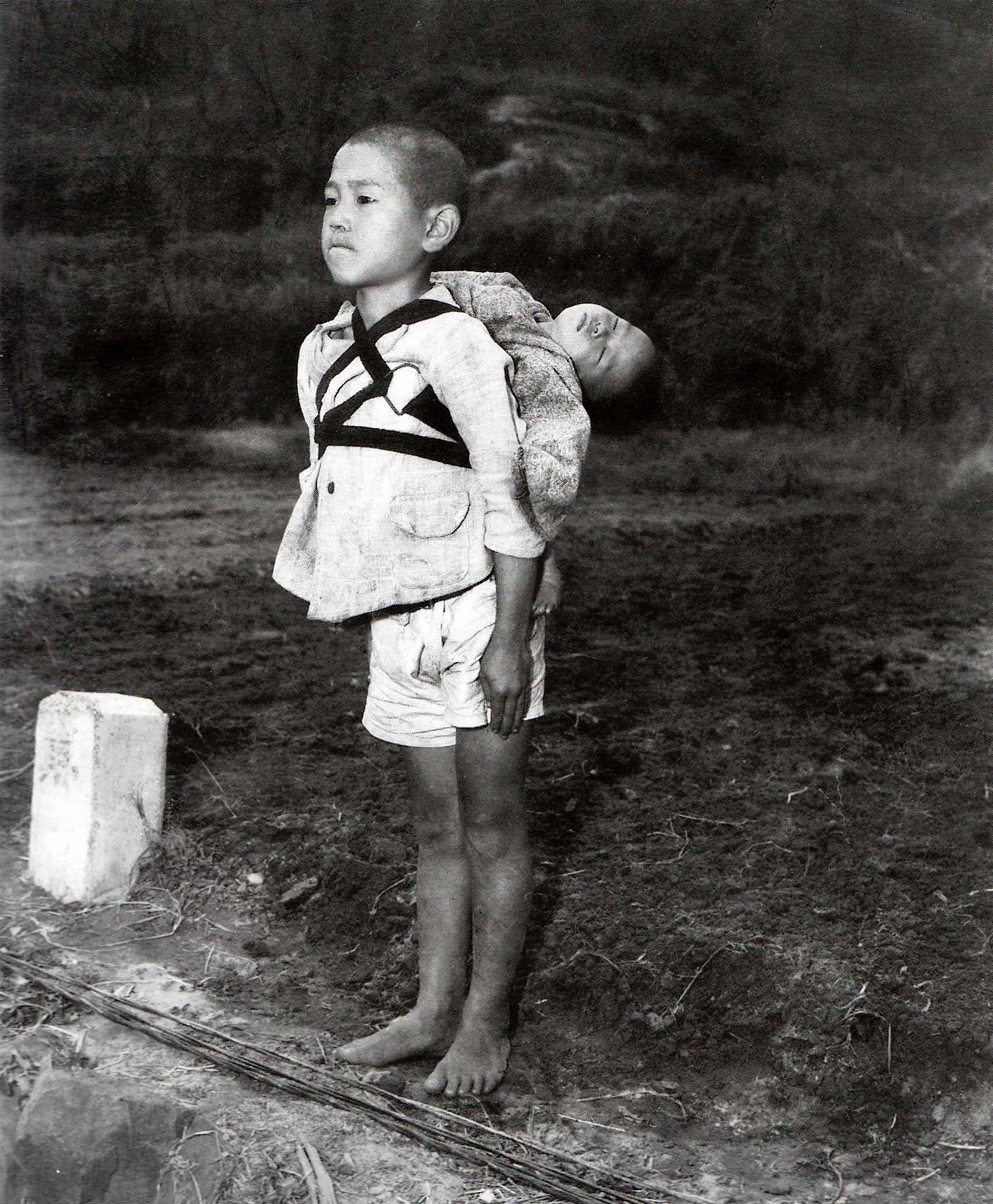Authors:
Historic Era: Era 8: The Great Depression and World War II (1929-1945)
Historic Theme:
Subject:
June/July 2005 | Volume 56, Issue 3


Authors:
Historic Era: Era 8: The Great Depression and World War II (1929-1945)
Historic Theme:
Subject:
June/July 2005 | Volume 56, Issue 3

I had trained at Parris Island thinking that I was going to the Pacific to fight the Japanese or at the very least to photograph American troops fighting the Japanese. That whole time, it had been drummed into us Marines how fiendish the Japanese were. We knew the story of the Bataan Death March by then. We knew about the kamikaze pilots crashing into our ships. We knew the Japanese would never surrender.
We knew all that until August 6, 1945, when Harry Truman went on the radio to announce that a new bomb had been dropped on a Japanese city named Hiroshima. Truman called it “a harnessing of the basic power of the universe.” A few days later a second bomb exploded over Nagasaki.
Then, in a literal flash, it was over. The Japanese hemmed and hawed for a few days and surrendered. On August 28, the first occupying troops entered the country. My unit was sent about 10 miles from the city of Nagasaki on the island of Kyushu.
None of us knew what we would find there, General MacArthur and leaders in Washington had tried to limit press access to both Hiroshima and Nagasaki. On the day of the surrender, Wilfred Burchett of the London Daily Express traveled 21 hours by train from Tokyo to Hiroshima and reported through a Japanese news agency about radiation sickness. But he was the only one.
Naturally, we were curious about the effects of the bomb. My warrant officer told me to go take some pictures, so, one day, I just walked the whole 10 miles. Another photographer named Larry Johnson went with me. He was kin to General Lewis Hershey, the man who had run the peace-time draft.
The road into Nagasaki was long, wide, and unpaved. It was hot that day, and humid, and we were surrounded by flies and mosquitoes. We really had no idea where we were going, so when we finally saw somebody, a Japanese farmer, we took out our language book and tried to ask him where the city was. He answered back, gesturing sadly. We never did know what he was saying. Maybe we didn’t need to.
I knew by the smell when we were getting close. If you’ve ever smelled a dead dog by the side of the road, you’ll have an idea of what it was like. Flies and maggots were everywhere. The smell started a couple of miles before we saw anything.
Nagasaki was hard to see because it was surrounded by a series of ridges. As we got